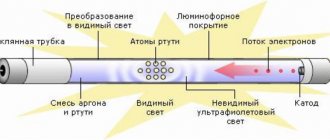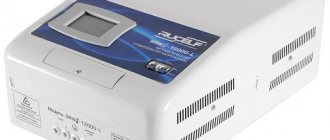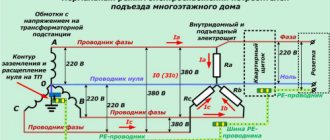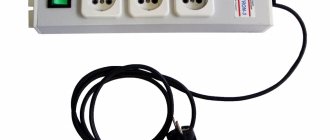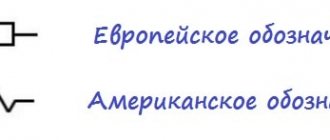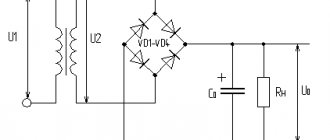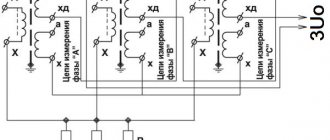The reason why snubbers are used
During the development of a power pulse converter (especially for powerful devices of push-pull and forward topologies, where switching occurs in hard modes), it is necessary to take proper care to protect the power switches from voltage breakdown.
Despite the fact that the documentation for the field device indicates the maximum voltage between drain and source at 450, 600 or even 1200 volts, one random high-voltage pulse at the drain may be enough to cause an expensive (even high-voltage) switch to fail. Moreover, neighboring elements of the circuit, including the scarce driver, may come under attack.
Such an event will immediately lead to a bunch of problems: where can I get a similar transistor? Is it on sale now? If not, when will it appear? How good will the new field worker be? Who, when and for what money will undertake to resolder all this? How long will the new key last and will it repeat the fate of its predecessor? etc.
In any case, it is better to be on the safe side right away, and even at the design stage of the device to take measures to prevent such troubles in the bud. Fortunately, a reliable, inexpensive and easy-to-implement solution based on passive components is known, which has long become popular among both amateurs of high-voltage power equipment and professionals. We are talking about the simplest RCD snubber.
Traditionally, for pulse converters, the inductance of the primary winding of the transformer or inductor is included in the drain circuit of the transistor. And when the transistor is abruptly turned off in conditions where the switched current has not yet decreased to a safe value, according to the law of electromagnetic induction, a high voltage will appear on the winding, proportional to the inductance of the winding and the speed of transition of the transistor from the conducting state to the closed state.
If the front is steep enough, and the total inductance of the winding in the drain circuit of the transistor is significant, then the high rate of voltage rise between the drain and source will instantly lead to disaster. To reduce this rate of voltage growth and facilitate the thermal shutdown of the transistor, an RCD snubber is placed between the drain and source of the protected switch.
How does an RCD snubber work?
The RCD snubber works as follows. At the moment the transistor is turned off, the current in the primary winding, due to the presence of inductance, cannot instantly drop to zero. And instead of burning the transistor, the charge, under the influence of high EMF, rushes through the diode D into the capacitor C of the snubber circuit, charging it, and the transistor closes in the soft mode of a small current through its junction.
When the transistor begins to open again (sharply transitioning to a conducting state to work out the next switching period), the snubber capacitor will begin to discharge, but not through the bare transistor, but through the snubber resistor R. And since the resistance of the snubber resistor is several times greater than the resistance of the drain junction source, then the bulk of the energy stored in the capacitor will be released precisely on the resistor, and not on the transistor. Thus, the RCD snubber absorbs and dissipates the energy of the parasitic high-voltage surge from the inductance.
Snubber chain calculation
P – power dissipated by the snubber resistor C – capacitance of the snubber capacitor t – turn-off time of the transistor during which the snubber capacitor is charged U – maximum voltage to which the snubber capacitor will be charged I – current through the transistor until it closes f- how many times per second it will operate snubber (transistor switching frequency)
To calculate the values of the elements of the protective snubber, we first set the time during which the transistor in this circuit passes from the conducting state to the off state. During this time, the snubber capacitor should have time to charge through the diode. Here, the average current of the power winding is taken into account, from which it is necessary to protect. And the supply voltage of the converter winding will allow you to select a capacitor with a suitable maximum voltage.
The simplest option is Relay
An electromagnetic relay is the simplest option for controlling a 220V load with a microcontroller. In essence, it is an ordinary electromagnet. When direct current is applied to the coil, a magnetic field is generated, the core is retracted and shorts the terminals. To control the relay itself, the same methods described in the article “How to control a DC motor” apply. It is important to pay attention to the relay holding current and the maximum current and switching voltage. Typically, the holding current is quite high, around 100 mA, and the voltage is 5 or 12V. Therefore, it will not be possible to control directly from the microcontroller. You will need a transistor.
Approximate relay connection diagram using a MOSFET transistor. As can be seen in the diagram, the presence of a diode is required. Additionally, you can limit the current consumption of the relay itself by connecting it in series through a resistor. Typically, the holding current is much less than the starting current when the relay is turned on. You can also add a capacitor to provide starting current. The complete diagram might look something like this:
The main disadvantage of a relay circuit is the presence of a mechanical part in the relay. It is this part that limits the switching frequency of the relay and allows the use of relays with a frequency of 0.5 Hz or less. Thus, the load relay can only be controlled in an on-off mode, without the ability to regulate the power supplied to the load.
Application
This type of semiconductor elements was originally intended for use in the manufacturing sector, for example, to control electric motors of machine tools or other devices where continuously variable current control is required. Subsequently, when the technical base made it possible to significantly reduce the size of semiconductors, the scope of application of symmetrical thyristors expanded significantly. Today, these devices are used not only in industrial equipment, but also in many household appliances, for example:
- chargers for car batteries;
- household compressor equipment;
- various types of electric heating devices, ranging from electric ovens to microwaves;
- hand-held electric tools (screwdriver, hammer drill, etc.).
We control the 220V load with power regulation
I would like to be able to regulate the power supplied to the controlled device in the range from 0 to 100%. This is the problem we will solve.
As you know, the household electrical network has an alternating voltage of 220V with a frequency of 50 Hz. On the oscillogram it looks like this:
The voltage changes in a sine wave, changing polarity every 10 ms. There are two methods to limit the total power of a sine wave:
- phase method
- full half cycle method
In the phase method, the load is disconnected from the network for part of the time of each half-cycle; the disconnection is usually made after passing through 0. The voltage supplied to the load in this case looks like this:
In the second method, full cycles or half cycles, the load is switched off for a whole number of periods:
For example, it might look like this in the case of half-cycles. With this type of control, it is important to ensure that the average current is zero.
Let's take a closer look at how to manage the load using the full periods method. It provides less interference to the 220V network, since the current and voltage in the load increase synchronously and produce less emissions into the network.
Group connection of semiconductor devices
Serial and parallel connection of devices used to increase the permissible values of current and voltage in one branch of a powerful converter or device is called a group connection. A group connection is sometimes also used to increase the reliability of converters in which the failure of a single device should not disrupt the operation of the entire installation.
Due to the technological dispersion of current-voltage characteristics, with a parallel connection, individual devices are overloaded with current, and with a series connection, with voltage. When connecting, for example, two diodes in parallel (Fig. 8.
1, a) through the diode VD1, which has a steeper forward branch of the current-voltage characteristic (smaller dynamic resistance rT), with a total forward voltage uF current i1 flows, greater than the current i2 of the diode VD2 in the flat straight branch of the current-voltage characteristic. In the case of a series connection of diodes VD1 and VD2 (Fig. 8.1, b), which have a spread in the reverse branches of the current-voltage characteristic, when a reverse voltage uR is applied, a total reverse current iR flows through the diode circuit.
A larger portion of the total reverse voltage uR, equal to uR1, is applied to the diode VD1 with a flatter reverse characteristic. An increase in the spread of characteristics worsens the performance of the diodes in a group connection.
Operating conditions worsen even more when thyristors are connected in groups. In dynamic modes of applying direct voltage, due to the variation in the recovery time of the blocking ability, the full voltage of the entire circuit can be applied to the thyristor for a shorter time, and the thyristor can turn on spontaneously. In a parallel connection, the thyristor, which has a shorter turn-on time, absorbs the entire current of the main circuit and may fail due to thermal runaway.
To ensure reliable operation of semiconductor devices in group connections, as a rule, measures must be taken to uniformly distribute current in parallel and voltage in series connections.
a b
Figure 8.1. Schemes of parallel (a) and series (b) connections of diodes
and corresponding graphs of distribution unevenness
forward current and reverse voltage
8.2. Parallel connection of semiconductor devices
With a parallel connection, it is necessary to ensure uniform distribution of forward current in static and transient modes. This problem is quite easily solved in diode circuits, since the characteristics of the devices do not have a very wide spread. It is much more difficult to solve it when using transistors and thyristors.
Two ways of equalizing the current in parallel connection are used: selection of devices of the same type with the same characteristics and forced division of the current using additional electrical devices.
The percentage of underutilization of the load capacity of power semiconductor devices (PSDs) in a parallel connection due to uneven current division is determined by the formula
, (8.1)
where I is the resulting direct current of the parallel connection;
a – number of parallel devices;
– maximum permissible current of one device.
From expressions (8.1), you can obtain the maximum permissible current of the device for a given uneven current division:
. (8.2)
Typically, an underutilization of the load capacity of no more than 101% is allowed. At the same time, in traction converters they use a method for selecting devices with a voltage spread of no more than 0.02 V.
The lower the permissible percentage of reduction in load capacity, the more expensive the installation, since the selection of devices with identical characteristics is very labor-intensive. An increase in the permissible unevenness leads to an excessive increase in the installed power of devices in a group connection. Therefore, instead of selecting devices, they often resort to forced division of current.
If the spread of current values should not exceed 10%, then external current dividers should be used. Active and inductive dividers can be used.
Triac - a powerful key for a 220 V network
The easiest way to control a 220V load is to use a relay. It allows you to control a powerful load using constant voltage. This article will not discuss this method; it is quite simple. It is enough to apply voltage to the relay magnet and it will close the contacts. Unfortunately, the relay does not control the load quickly enough. With a large number of on/off switches, it quickly breaks down. Also, at the moment of switching, large impulse noise occurs. It is better to use a relay with a control frequency of no more than once every 2-3 seconds.
As we already know from the article “How to control a DC motor,” in DC circuits, a transistor is an electronic switch, a device that allows a low voltage or current to control a more powerful load.
For alternating current, there are also such electronic keys - misto.
The triac conducts current in both directions, therefore it is used in alternating current networks. To control the load, the main electrodes of the triac are connected in series with the load. In the closed state, there is no conductivity of the triac, the load is turned off. When an unlocking signal is applied to the control electrode, conduction occurs between the main electrodes of the triac, and the load turns on.
To keep the triac open, there is no need to constantly apply a signal to the control electrode (unlike a transistor). It remains open as long as the current flowing through the main terminals exceeds a certain value called the holding current. It follows that switching off the load in the AC circuit occurs near the moments in time when the current through the main electrodes of the triac changes direction (usually this coincides in time with a change in the polarity of the voltage in the AC network). This point on the sine wave is called the zero crossing.
The triac can be controlled directly from the microcontroller, but this requires a fairly large current - 10-20 mA. There are also logical triacs. Their control current is about 5 mA. It is better to use ordinary triacs in circuits; they are more protected from spontaneous opening. What is it and how can you control ordinary triacs? Read on.
First, let's see how powerful a load a typical triac can control. Let's take the BT139-800 triac as an example .
The datasheet usually contains graphs of the power released by the triac when controlling the load. Here is an example of such a graph.
Knowing the released power, we use the parameters of heat dissipation by the case to obtain the heating temperature of the triac and evaluate its performance.
From all these parameters it follows that without a radiator, this triac can dissipate about 2W of heat. When controlling full half-cycles, you need to take the current graph for a=180 degrees. The graph in this area is almost linear, so we can say that the average current will be about 2A.
That is, without a radiator, this triac will be able to control a load of 2A * 220V = 440 W. In other cases, a radiator will be needed.
Now let's figure out how a microcontroller can control a powerful triac?
Description of the operating principle and device
The main difference between these elements and thyristors is the bidirectional conductivity of electric current. Essentially, these are two SCRs with common control, connected back-to-back (see A in Fig. 1).
Rice. 1. Circuit with two thyristors, as an equivalent of a triac, and its conventional graphic designation
This gave the name to the semiconductor device, as a derivative of the phrase “symmetrical thyristors” and was reflected in its UGO. Let us pay attention to the designations of the terminals, since current can be carried in both directions, the designation of the power terminals as Anode and Cathode does not make sense, therefore they are usually designated as “T1” and “T2” (options TE1 and TE2 or A1 and A2 are possible). The control electrode is usually designated “G” (from the English gate).
Now consider the structure of the semiconductor (see Fig. 2.) As can be seen from the diagram, there are five junctions in the device, which allows you to organize two structures: p1-n2-p2-n3 and p2-n2-p1-n1, which, in fact, are two counter-current thyristors connected in parallel.
Rice. 2. Block diagram of a triac
When negative polarity is formed at the power terminal T1, the trinistor effect begins to manifest itself in p2-n2-p1-n1, and when it changes, p1-n2-p2-n3.
Concluding the section on the principle of operation, we present the current-voltage characteristics and the main characteristics of the device.
I-V characteristics of the triac
Designation:
- A – closed state.
- UDRM (UPR) – maximum permissible voltage level for direct connection.
- URRM (UOB) – maximum reverse voltage level.
- IDRM (IPR) – permissible direct current level
- IRRM (IOB) - permissible level of reverse switching current.
- IN (IUD) – holding current values.
B – open state.
Optosimistor is a convenient method of controlling a powerful triac microcontroller
Since the triac conducts current in both directions, then in relation to its main terminals, the control current can be located in four squares.
You can also present this in table form:
The datasheet shows in which quadrants a particular triac is controlled and what current is needed for this. For example, the selected triac is controlled in all 4 quadrants. But at the same time, the control current and protective properties against false alarms differ.
It can be seen that the 4th quadrant is the most disadvantageous. The control current increases sharply. Also, the protective properties with such control decrease.
This leads to the conclusion that when controlling a microcontroller, it is better to control in quadrants 1-3.
If the control is direct, then the MK must be able to change the polarity of the output, which is difficult, or have a positive power supply in common with terminal A1 (control will be in the second and third quadrants). The second option is not difficult to implement with a capacitor power supply. This appnote AN2986 discusses this case in detail.
The second option is to control via an optosimistor. There are quite a lot of such devices and they are inexpensive. For example - MOC3041. There are optosimistors with a built-in zero-crossing control circuit; they can only turn off near zero. This is what we need for the full period control scheme. And there is one without this scheme. With their help you can control the phase method.
The control circuit using an optosimistor is as follows:
The device itself looks like this inside:
In this case, control is of the same polarity as terminal A2, that is, in the first and third quadrants.
Additionally, the optosimistor isolates the microcontroller operating circuit from the network, which reduces interference and increases the reliability of the device. If there are no requirements for the compactness of the device, then we recommend using optosimistors to control other more powerful triacs.
Peculiarities
To have a complete understanding of symmetrical thyristors, it is necessary to talk about their strengths and weaknesses. The first include the following factors:
- relatively low cost of devices;
- long service life;
- lack of mechanics (that is, moving contacts that are sources of interference).
The disadvantages of the devices include the following features:
- The need for heat removal is approximately at the rate of 1-1.5 W per 1 A, for example, at a current of 15 A, the power dissipation value will be about 10-22 W, which will require an appropriate radiator. For ease of fastening to it for powerful devices, one of the terminals has a thread for a nut.
Triac with radiator mount
- Devices are subject to transients, noise and interference;
- High switching frequencies are not supported.
The last two points require a little clarification. In the case of high switching speed, there is a high probability of spontaneous activation of the device. Interference in the form of a voltage surge can also lead to this result. To protect against interference, it is recommended to bypass the device with an RC circuit.
RC circuit to protect the triac from interference
In addition, it is recommended to minimize the length of the wires leading to the controlled output, or alternatively use shielded conductors. It is also practiced to install a shunt resistor between the T1 terminal (TE1 or A1) and the control electrode.
Triac protection circuit against network interference
If the voltage at the main terminals of the triac or the current changes too quickly, it may spontaneously open and begin to conduct current. This is very unpleasant. This can mainly happen when driving an inductive load (the inductance resists a change in current). But this can also happen when a device with inductance is operating nearby in the network (for example, when a motor and a soldering gun controlled by a microcontroller operate through the same socket). In this case, regardless of the microcontroller, the controlled load will not be disconnected from the network and the current will continue to flow. For example, when operating a soldering gun, this situation can even lead to a fire.
A simple defense against this case is a snubber circuit (resistor plus capacitor):
But it does not guarantee work in all cases. The parameters are calculated for a specific inductance. Appnote AN-3004 discusses snubber calculations in detail.
The second option is to use triacs operating in quadrants 1-3. For example, T405. The manufacturer indicates that they can be used to control even inductive loads without a snubber.
Purpose of the snubber
The device is designed to suppress inductive emissions, to reduce the value of overvoltages in transient processes that appear during switching operations with power semiconductors. They are practically indispensable for reducing the influence of parasitic generation, which helps reduce the heating of the transformer windings and for protecting diodes and powerful transistors from thermal overheating.
This is achieved by facilitating heat exchange during key operation. In this case, capacitance serves to reduce the rate of voltage rise, and inductance reduces the increase in current. As the value of dynamic losses in the power switch decreases, a switching trajectory is formed: in this case, capacitive capacitors connected in parallel will reduce the rate of voltage rise. Inductance in switching circuits limits the rate at which current increases.
The snubber performs the task of preventing erroneous switching on of the semistor, which can occur as a result of network interference. It is useful to use a snubber as an overvoltage limiter for a key transistor that appears during switching. In this case, the model can be used in switching power supply devices.
Phase method
To solve the problem of phase control of the load, the microcontroller needs to know when the zero crossing was made. Then it will be possible to calculate the delay time for turning on the load.
The simplest method for obtaining an AC zero-crossing event is described in detail in appnote AN521 from Microchip. Almost every microcontroller has high-voltage protection diodes on each digital input. This can be used to obtain zero crossing information. It is enough to install a high-resistance resistor at the input, limiting the current at the MK output to the values specified in the datasheet on the MK. In this case, the output in normal digital mode will take the value 0 at the moment of zero crossing. The time delay from real state to real state will be minimal and is about 50 μs.
The disadvantage of this scheme is the lack of galvanic isolation of the control circuit from the 220V network. If necessary, an optocoupler can be used.
Well, then, you can already control a powerful triac as described earlier, only if you do this through an optosimistor, then without a zero-crossing circuit.
This article examines the basic methods of controlling a powerful load of a 220V AC network using triacs. After reading the theoretical part, let's move on to practice. A soldering station is a device in which a microcontroller controls a powerful soldering gun operating from a 220V network.
How to check the functionality of a triac?
You can find several methods online that describe the testing process using a multimeter; those who described them, apparently, have not tried any of the options themselves. In order not to be misleading, you should immediately note that testing with a multimeter will not be possible, since there is not enough current to open the symmetrical SCR. Therefore, we are left with two options:
- Use a pointer ohmmeter or tester (their current strength will be sufficient to trigger).
- Collect a special circuit.
Algorithm for checking with an ohmmeter:
- We connect the probes of the device to terminals T1 and T2 (A1 and A2).
- Set the multiplicity on the ohmmeter x1.
- We carry out a measurement, a positive result will be infinite resistance, otherwise the part is “broken” and can be gotten rid of.
- We continue testing, to do this we briefly connect pins T2 and G (control). The resistance should drop to about 20-80 ohms.
- Change the polarity and repeat the test from steps 3 to 4.
If during the test the result is the same as described in the algorithm, then with a high probability it can be stated that the device is operational.
Note that the part being tested does not have to be dismantled; it is enough to just turn off the control output (naturally, having first de-energized the equipment where the part that raises doubt is installed).
It should be noted that this method does not always allow reliable testing, with the exception of testing for “breakdown”, so let’s move on to the second option and propose two circuits for testing symmetrical thyristors.
We will not give a circuit with a light bulb and a battery in view of the fact that there are enough such circuits on the network. If you are interested in this option, you can look at it in the publication on testing thyristors. Let's give an example of a more effective device.
Circuit of a simple tester for triacs
Designations:
- Resistor R1 – 51 Ohm.
- Capacitors C1 and C2 – 1000 µF x 16 V.
- Diodes - 1N4007 or equivalent, installation of a diode bridge, for example KTs405, is allowed.
- HL bulb – 12 V, 0.5 A.
You can use any transformer with two independent 12 Volt secondary windings.
Verification algorithm:
- Set the switches to their original position (corresponding to the diagram).
- We press SB1, the device under test opens, as indicated by the light bulb.
- Press SB2, the lamp goes out (the device is closed).
- We change the mode of the SA1 switch and repeat pressing SB1, the lamp should light up again.
- We switch SA2, press SB1, then change the position of SA2 again and press SB1 again. The indicator will turn on when the shutter hits minus.
Now let's look at another scheme, only universal, but also not particularly complicated.
Circuit for testing thyristors and triacs
Designations:
- Resistors: R1, R2 and R4 – 470 Ohm; R3 and R5 – 1 kOhm.
- Capacities: C1 and C2 – 100 µF x 10 V.
- Diodes: VD1, VD2, VD5 and VD6 – 2N4148; VD2 and VD3 – AL307.
A 9V battery, Krona type, is used as a power source.
Testing of SCRs is carried out as follows:
- Switch S3 is moved to the position as shown in the diagram (see Fig. 6).
- Briefly press button S2, the element under test will open, which will be signaled by the VD LED
- We change the polarity by setting switch S3 to the middle position (the power is turned off and the LED goes out), then to the bottom.
- Briefly press S2, the LEDs should not light up.
If the result corresponds to the above, then everything is in order with the tested element.
Now let's look at how to check symmetrical thyristors using the assembled circuit:
- We carry out steps 1-4.
- Press the S1 button - the VD LED lights up
That is, when you press the S1 or S2 buttons, the VD1 or VD4 LEDs will light up, depending on the set polarity (the position of the S3 switch).
How to check a triac?
Having talked about the positive and negative aspects of the triac, we smoothly brought our study of triacs to a very important aspect, namely, testing. You can say? What kind of check is this? It's probably something useless. And we will answer you that checking triacs is very important, because essentially the entire electrical appliance rests on it, and by identifying a defect or malfunction in at least one triac from the batch, you have a chance to save entire electrical appliances from serious damage. But here too, newcomers ask a question.
And in the factories where these triacs are made, don’t they check them? This question is very interesting, but the answer is also quite simple. Factories do not have time to test each individual triac, so at most one device from a batch can be tested. Therefore, let’s now talk about how you can still check the serviceability of this wonderful device.
There are several effective ways to test a triac. Let's look at each of them in detail. To begin with, let’s say right away that checking a triac inside the circuit is a completely wrong action. You definitely need to remove it from the board first and then work with it. Why?
Everything is very simple here. If you test your triac and it is inside the circuit, then you can test it and it will be faulty, but in fact the neighboring element connected in parallel to it will be faulty. Therefore, it is necessary to eliminate all factors by disconnecting the triac from the circuit and desoldering it. Please note that you will need to check each individual element, otherwise you will not be able to find the cause of the breakdown. First, as a rule, they check the power circuits, then they move on to keys made of semiconductor materials. How can you check semiconductor switches:
- checking with a multimeter (for example, a continuity tester or an ohmmeter). This works according to the following principle: we use a multimeter in resistance measurement mode, connect the contacts to our triac, and then look at the resulting measurements. The fact is that a working triac should have a large or very large value on the ohmmeter.
This is what a multimeter looks like
Soldering iron power control circuit
In conclusion, we present a simple circuit that allows you to control the power of the soldering iron.
Simple power regulator for soldering iron
Designations:
- Resistors: R1 – 100 Ohm, R2 – 3.3 kOhm, R3 – 20 kOhm, R4 – 1 Mohm.
- Capacitances: C1 - 0.1 µF x 400V, C2 and C3 - 0.05 µF.
- Symmetrical thyristor BTA41-600.
The above diagram is so simple that it does not require configuration.
Now let's look at a more elegant option for controlling the power of a soldering iron.
Power control circuit based on a phase regulator
Designations:
- Resistors: R1 – 680 Ohm, R2 – 1.4 kOhm, R3 – 1.2 kOhm, R4 and R5 – 20 kOhm (dual variable resistance).
- Capacitances: C1 and C2 – 1 µF x 16 V.
- Symmetrical thyristor: VS1 – VT136.
- DA1 phase regulator microcircuit – KP1182 PM1.
Setting up the circuit comes down to selecting the following resistances:
- R2 – with its help we set the minimum temperature of the soldering iron required for operation.
- R3 – resistor value allows you to set the temperature of the soldering iron when it is on the stand (switch SA1 is activated),
Triac? Hear it for the first time
A triac is one of the subtypes of thyristors, which usually consists of many thyristors. In another way it is also called a symmetrical triac.
What does this triac consist of?
Physicists very often present a triac in the form of a five-layer semiconductor. There are also images in the form of 2 thyristors. At the same time, the control is very different from how the switched-on triode thyristors are controlled, which is why they were separated into a separate group. Let's now find out how the controls work.

